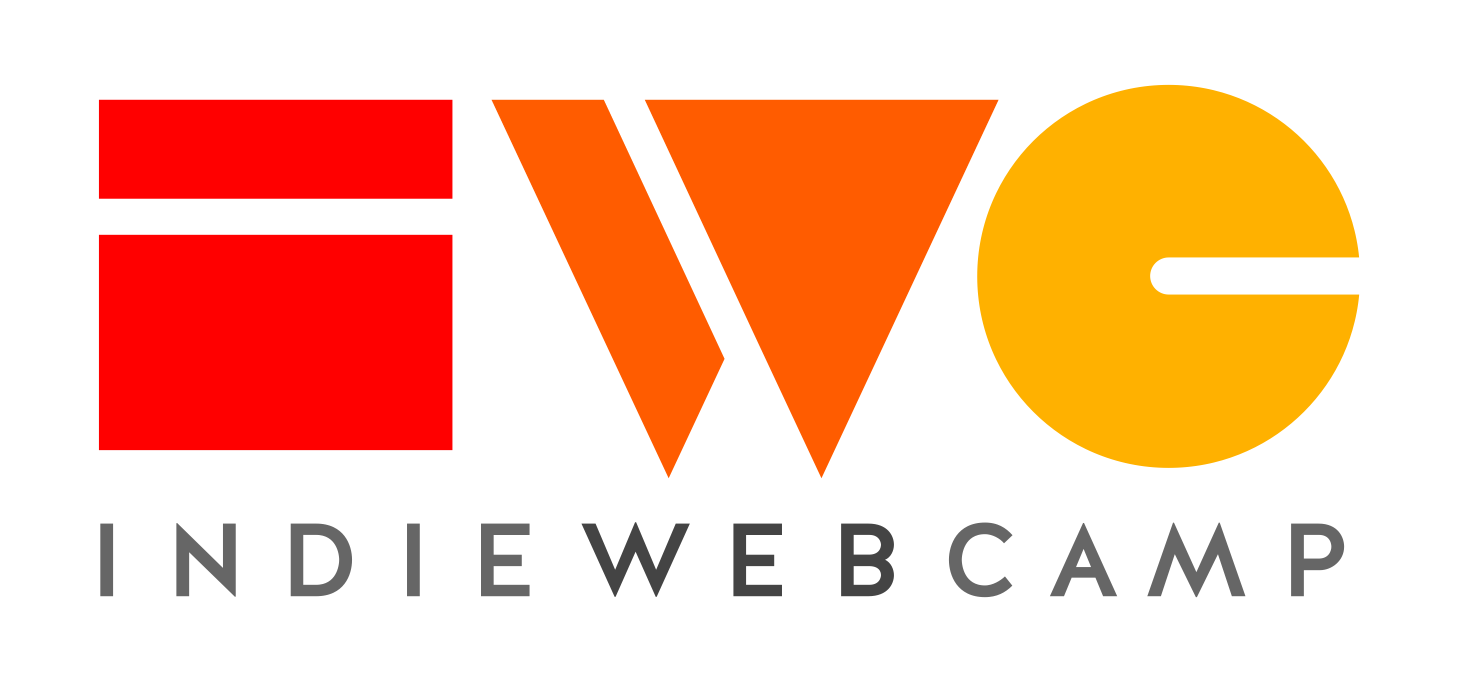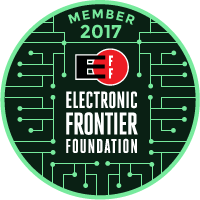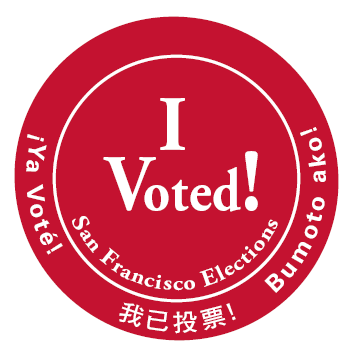badge
This article is a stub. You can help the IndieWeb wiki by expanding it.


A badge (AKA achievement) on the IndieWeb is a post or home page button showing completion of an accomplishment (a form of gamification) or self-expressed support for a cause, often for finishing a task or passing a test like a validator, embeddable with a unique code or generically with a sticker image; there are prototypes for creating, issuing, and displaying peer-to-peer IndieWeb badges via Webmention.
There are other uses of the term badge especially in the context of notifications, e.g.
- notification badge — indicators, usually a red dot, sometimes with a number inside, that a page, feature, application, or OS homescreen has notifications for viewing and acting on. These are often configured inside "Notifications" settings in an OS or application.
- application badge — the presentation of an indicator specifically on an application icon, often implemented on web pages & web apps by modifying the favicon, and some support of the W3C Badging API.
Badge systems often recognize an accomplishment with a phrase like "achievement unlocked", or "you unlocked the xyz badge!".
Badges typically have a visual icon as well as a short name and description. Badges are also used to indicate specific competencies or skills have been met in educational settings. Badges are sometimes part of a gamification mechanism to encourage users to more actively use a system or as a record of learning.
IndieWeb Badges
For IndieWeb badges you can use on your own site, see:
IndieWeb Examples
Mike Merrill
Mike Merrill awards badges to people based on his interactions with them in person.
Greg McVerry
 Greg McVerry sent webmention badges in a higher education course Webmention Badge
Greg McVerry sent webmention badges in a higher education course Webmention Badge
Published a badge on toolbuilder-badge on the indieweb wiki and received a webmention on his website jgmac1106 Badges
Created a badge system for his classes EDU 407 Badges with a badge being set up as an h-feed and each badge as an h-entry and then using the id property to create a permalink to each badge. Each badge contains an h-card for the issuer, a link to the criteria, and link to the evidence. The badge is sent as reply post. Literacy Mantra Badge
gRegor Morrill
 gRegor Morrill has created a couple badges since 2022-05-19
gRegor Morrill has created a couple badges since 2022-05-19
- silly and oddly specific: https://gregorlove.com/2022/05/david-shanske-was-awarded/
- more serious: https://gregorlove.com/2025/04/congratulations-to-joe-crawford/
add yourself!
...
Validator Examples
This section is a stub. You can help the IndieWeb wiki by expanding it.
W3C Feed Validator
The W3C Feed validator shows you a badge if you submit a valid feed, e.g. for a valid Atom 1.0 feed:

Silo Examples
Foursquare
Foursquare awarded badges for checking in to various kinds of venues, or using certain words in a checkin. Some badges were limited to specific events or geographical areas. Foursquare was largely responsible for the rising popularity of badges in online systems, as evidenced by how many later systems referenced Foursquare's badge feature. There are many fan sites that popped up describing each badge and how to earn them.
See: Foursquare Badges for screenshots of ~150 badges.
Swarm
Swarm has largely replaced Foursquare's previous use of badges with stickers, which are now earned by checking in to venue categories and can then be applied to later checkins to earn more coins.
- blog.foursquare.com/post/118142264388/your-old-foursquare-badges-and-mayorships-evolved (Internet Archive link)
Discourse
Discourse awards badges to users to "reinforce positive user behavior". Some badges are automatically awarded by the system, and others are awarded by admins.
Some badges they award include:
- First Like - first time you like another post
- First Emoji - first use of an emoji in a post
- First Onebox - first time you include a URL on a line by itself in a post which then shows a link-preview which is linked to that URL
- Editor - first post edit
- Autobiographer - filling out the text fields of and uploading an image to your user profile
- First Flag - flagged a post
- Nice Share - shared a post with 25 unique visitors
- Promoter - invited a user
- Welcome - received a like
- 1 year anniversary
- Campaigner - invited 3 users
- Tech Support - have 10 accepted answers
Fitbit
Stack Overflow
Stack Overflow awards badges to users based on your usage of the site, intending to award badges for being especially helpful.
Some badges they award include:
- Altruist - First bounty you manually award on another person's question
- Curious - Ask a well-received question on 5 separate days, and maintain a positive question record
- Favorite Question - Question favorited by 25 users
- Tumbleweed - Asked a question with zero score, no answers, no comments, and low views for a week
micro.blog
micro.blog awards "pins" by achieving certain milestones of using the site.
Some examples include:
- First! - You wrote your first microblog post.
- Daily Blogger - Unlock this pin by posting every day for 30 days.
- Photoblog - You posted a photo to your microblog.
- Night Owl - You wrote a post after midnight.
Untappd
Untappd awards "badges" for: checking in beers; checking in at particular times; including a photo of the beer as part of the check-in; tagging friends on check-ins; etc. Additionally, users are able to propose and vote on new badges:
Some examples include:
- Newbie - So, you're new around here? Congrats on your first brew! This one's for you.
- Liquid Lunch - Are you having a rough morning or perhaps just can’t wait for happy hour. Why not grab a quick pint with lunch and coast through the afternoon.
- Beer Party - Drinking with friends is fun. Right? You've checked in with at least 4 other people within 2 hours.
- Photogenic Brew - It takes the perfect amount of light, the right framing and a touch of creative love to get the perfect picture of your brew. Now it’s time to drink it! That’s 5 check-ins with a photo.
- Photogenic Brew (Level 2) - It takes the perfect amount of light, the right framing and a touch of creative love to get the perfect picture of your brew. Now it’s time to drink it! That’s 10 check-ins with a photo.
Github
Github announced achievement badges 2022-06-09 [1]. By default they appear on your profile, but you can opt-out of displaying them.
Some examples include:
- Starstruck "created a repository that has many stars."
- Pull Shark "opened pull requests that have been merged."
- YOLO "You want it? You merge it." (merged your own PR)
- Galaxy Brain "answered discussions."
- Pair Extraordinaire "coauthored commits on merged pull requests."
Other Examples
EFF
EFF provides a member badge like this:

San Francisco Elections
San Francisco Elections provides an electronic “I Voted!” badge for folks who vote by mail:

Open Badges
Open Badges, is an open technical standard first developed by Mozilla in 2011, with funding from the MacArthur Foundation, to establish a portable and verifiable credentialing system as a portable image file. The badge standard was transitioned to IMS Global Learning Consortium, a members-only organization, as of January 1, 2017. The Mozilla Backpack, a badge displaying tool, was transferred to Badgr.io, a badging platform by Concentric Sky.
Baked Data in Open Badges
The badging community refers to a baked badge as an img file containing links to metadata properties using JSON-LD. The same properties included in the Open Badges spec are found in an h-entry but the data is not in the HTML and readily available to human readers.
Endorsements
The Open Badges 2.0 spec, included an endorsement class similar to a like post from a third party to the permalink of the badge.
Open Badges Criticism
- Pay-to-play barrier. The open standard, is now maintained by a pay-to-play members benefit consortium. Contribution to the "open standard" now requires significant dues that may cut off contributions from a long-standing community.
- Unnecessary complexity. Open Badges uses JSON-LD for metadata using the schema.org learning vocabulary.
- Patent encumbered. In 2018, Pearson, in the face of years of prior art, was granted a patent for digital badges. Their company was then purchased by Credly, who now owns the patent. In the case of "open" badges The rules of IMS Global Learning Consortium allow members rights to other member patents. Thus anyone who wants protection from the patent of an "open" badges standard needs to pay membership dues. In a call with Open Recognition Alliance, a Credly lawyer and a representative noted that the company had no plans to enforce the patent and but will keep it for defensive purposes.
Brainstorming
Quick Thoughts
- A webmention badge should be an h-review if it has a rating
- It can have a rating. If the rating is the criteria for the badge it should be listed or linked to in content.
- Badge criteria may require meeting a threshold on multiple scales. In that case use nested h-reviews and h-review-aggregate.
- a badge is a badge is a reaction to something on the URL it points at therefore should use in-reply-to
- Each badge issuance should contain an h-card for the issuer, and h-card for the recipient, the criteria, and a link to evidence.
- Each issuance should be it's own url so the receiver can decide how to display and link.
- A badge should have have a u-photo property in the content. Current best practices suggest not to put photos in replies but there are examples of photo replies such as reactionary gifs or photo_reply
- A badge may require additional microformats properties specifically p-criteria and p-evidence. Until then using p-note should be considered best practice...As of 2019-02-27
 Greg McVerry began adding the experimental properties p-x-evidence and p-x-criteria to badges
Greg McVerry began adding the experimental properties p-x-evidence and p-x-criteria to badges - Badge images should be no greater than 250px and should be SVG when possible.
- The Open Badges spec as an endorsment class, meaning a third party can endorse a badge issued by someone else. How should this be markerd and verifed by both sites so as not to allow spoofing?
- an endorsement of a badge can be sent using a like post similar to this example published as a like to [toolbuilder-badge] allowing Template:eddie to endorse the badge.
- an organization with a wiki, such as fandom could use a similar approach to endorse community badges such as:
* Endorsement of CSS Grid Explorer Badge
Credentialing at the DNS level
Webmention badges, using the u-reply-of microformats property, could provide for the ability for the issuer to establish their credibility through the use of their url.
A university websites url, for example, would be attached to any badge sent as a webmention.
This would provide a level of identification and credibility without requiring additional files.
Endorsements
While no one actually uses endorsements, the addition of the endorsement class was the major feature release in the Open Badges 2.0 spec. Webmention badges handle endorsements using microformat property "u-like-of." So if Company A wanted to endorse Badge offered by Professor X they publish a like post to the badge.
Ledgers and Webmention Badges
Third party systems such as webmentions.io can provide a record of badge issuance. A learning network could add their own ledger and syndicate badge issuance using the micrformats property u-syndication-of.
See Also
- buttons
- 88x31
- 80x15
- CV and resumé
- portfolio
- indorsements
- 2018/NYC/badges
- https://github.com/jgmac1106/badgemaker-prototype
- https://github.com/jgmac1106/webmention-badges
- indieweb example: Parkeology Challenge 2018 in Brief
- The Selfish Ledger by Template:wiobyrne
- paid service: https://openbadgefactory.com/
- tool for designing badges: https://badge.design/
- Example badges site (issuing, earning, awarding, embedding) https://www.holopin.io/ (no use of blockchain/NFT)
- https://en.wikipedia.org/wiki/Web_badge
- I gamified my own blog "There's nobody telling me I can't award myself some badges to have a bit of fun and to motivate myself to write. When I hit a new milestone, I design a new badge and add it to my blog."
- gamification
